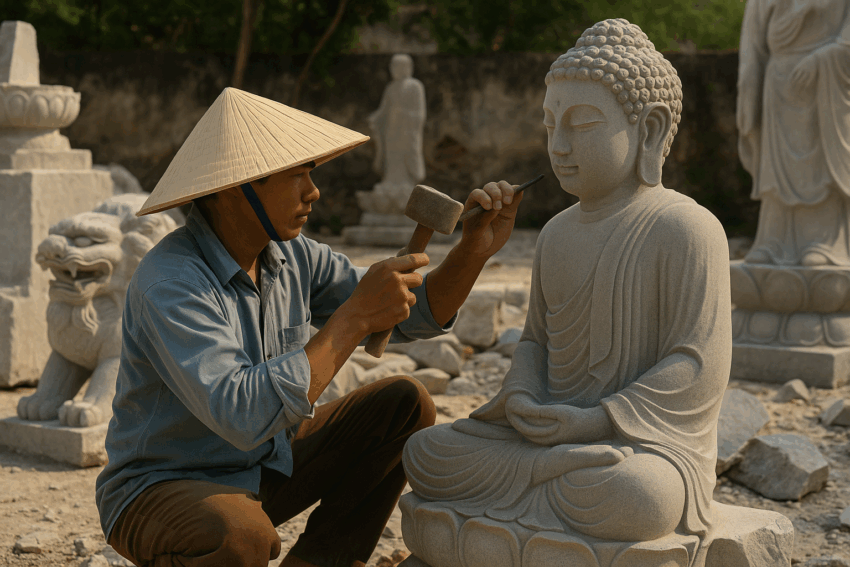Stone carving is one of Vietnam’s oldest and most respected traditional crafts, with a history that spans centuries. Rooted in cultural symbolism and spiritual belief, Vietnamese stone carving reflects not only remarkable craftsmanship but also the soul of a nation that cherishes art, history, and heritage.
1. A Tradition Carved in Time
The origins of stone carving in Vietnam date back to ancient times, particularly flourishing during the Ly (11th–13th centuries) and Tran (13th–14th centuries) dynasties. Temples, pagodas, and royal tombs from these eras feature exquisite stone dragons, lotuses, and guardians — all carved with meticulous care. These works reveal the influence of Buddhist and Confucian ideologies in Vietnamese art.
2. Famous Stone Carving Villages
One of the most renowned centers of stone carving in Vietnam is Non Nuoc Village at the foot of the Marble Mountains in Da Nang. This village has been crafting stone for over 400 years and is famous for producing high-quality statues, altars, and decorative works from local marble. Other villages, such as Thanh Hoa and Ninh Van (Ninh Binh), are also well-known for their skilled artisans and traditional techniques passed down through generations.
3. Techniques and Tools
Traditional stone carving involves a blend of hand tools such as chisels, hammers, and files, along with newer equipment to refine detail. Carvers often begin by sketching designs onto stone blocks, then slowly etch and sculpt the material. The process is time-consuming, requiring patience, precision, and a deep understanding of the stone’s natural grain and texture.
4. Symbolism and Artistic Expression
Vietnamese stone carvings are rich in symbolism. Common motifs include dragons (power and protection), lotuses (purity), turtles (longevity), and phoenixes (rebirth). These elements are more than decoration — they convey cultural stories, religious beliefs, and spiritual aspirations.
5. Stone Carving Today
Though modern materials and machine tools have emerged, traditional stone carving remains a cherished art form in Vietnam. Many artisans continue to produce both traditional and contemporary works for domestic and international markets. Stone carving also plays a key role in the restoration of ancient structures and the creation of memorials and sculptures in public spaces.
Conclusion
Stone carving in Vietnam is more than just a craft — it is a living cultural legacy. From majestic temple pillars to delicate spiritual statues, the skill and passion of Vietnamese stone carvers continue to inspire and preserve the cultural richness of the nation. As Vietnam embraces modernity, the preservation of this ancient art stands as a tribute to its enduring heritage.




